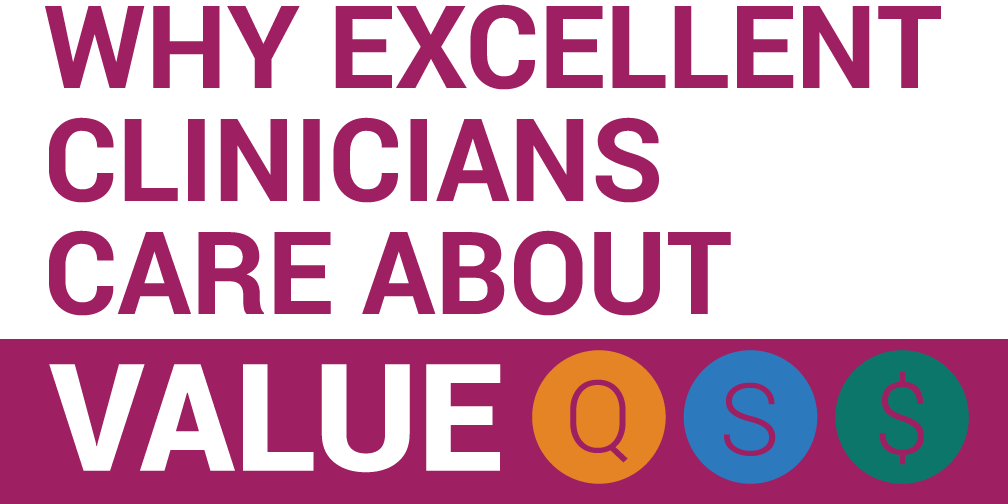ot so long ago, the conventional wisdom was that good clinicians needed to focus all of their energy and all of their intellect on what was best for the patients in front of them. The most sacred interaction in medicine was what went on between an individual doctor and an individual patient. One of my mentors told me that “value” was a code word for costs, used by people who really only cared about financial aspects of care.
That was then; this is now. Today, to be excellent as a clinician, one has to be ready to work as a member of a multidisciplinary team. There is simply too much to know and too much to do and keep track in medicine today – no individual can deliver state-of-the-science care to patients of any complexity at all without colleagues who are more than colleagues. And these teams have to do more than optimize outcomes for groups of patients – they need to work to improve the efficiency of care as well.
Teamwork. Efficiency. Organizing around meeting patients’ needs. These all go together. Collectively, they sound like “Mom-and-Apple Pie.” To many clinicians, however, they taste like cod liver oil.
But the fact is that we are entering a new health care marketplace that is being driven by competition on “the right things” – that is, meeting patients’ needs as efficiently as possible. Patients are being given more choices about what type of insurance product they want, and they are picking ones that they can afford. Lower priced insurance products often restrict access to a group of providers who can give care with a lower price or greater efficiency. And that means providers who are doing things the same old way will lose patients, lose market share. They will be trying to hang on, and be the last iceberg to melt.
There is a better way, of course – which is to organize, and work to improve outcomes so that patients want to come to you, and to do so efficiently so that they can afford to pick the insurance products in which you are participating. Those are the ingredients of high value health care. Working toward higher value is … work! It’s miserable. It requires change, and asking good, hard-working people to change what they do is not easy.
But the rewards can be considerable – better outcomes for patients, including better patient experience. Greater efficiency, so that more resources are available for investment in initiatives to make care even better. Greater market share and business success. Lower price, and lower turnover.
The goal of improving value has to be a major focus for everyone in an organization.
Value does not happen by accident, and good intentions are not enough. The goal of improving value has to be a major focus for everyone in an organization, including the clinicians. It means measuring outcomes and costs, and working relentlessly to get better. Getting better means improving one or more outcomes without raising costs; or lowering costs without compromising outcomes. Surprisingly often, both can be accomplished at the same time.
We will never be able to deliver immortality to our patients, nor perfect health. And will never reach a state that we can call “highest value health care.” But use of our creativity and energy in the pursuit of all of these goals defines excellence for the clinician today.
ABOUT: Thomas H. Lee, MD is Chief Medical Officer for Press Ganey and a practicing internist and cardologist at Brigham and Women’s Hospital in Boston. He is the former Network President for Partners Healthcare System and CEO for Partners Community Health Care, Inc. A national thought leader in value, Dr. Lee has been the expert content advisor for University of Utah’s Utah Value Revolution.
Tom Lee
Urogynecology specialist Whitney Hendrickson-Cahill details the steps an interdisciplinary team followed to reduce surgical site infections (SSIs) following hysterectomy procedures, aiming to improve patient outcomes, shorten recovery times, and reduce healthcare costs at University of Utah Health.
In an organization as big as U of U Health, it’s hard to know where our work fits into the big picture. System Planning Manager Cassandra Taft highlights five ways teams can meaningfully contribute to Operational Plan priorities, regardless of job role or responsibility.
Your gut tells you a process could be better than it is—how do you back that feeling up with hard data? Senior value engineer Luca Boi shows how undertaking a baseline analysis can jumpstart your improvement project.
